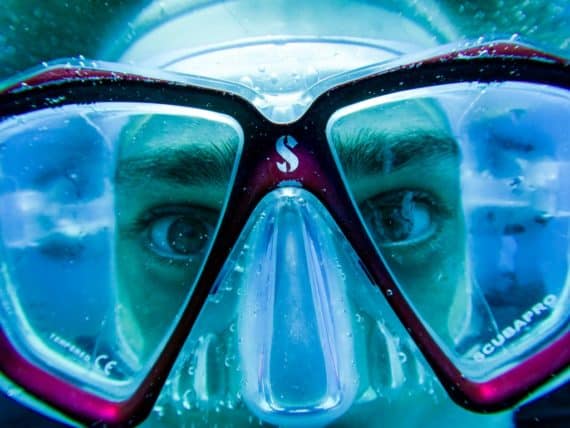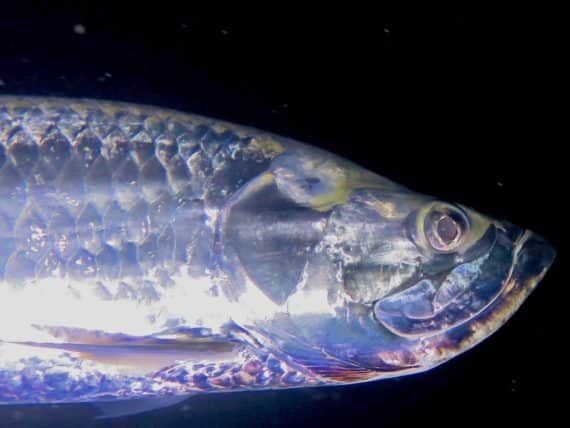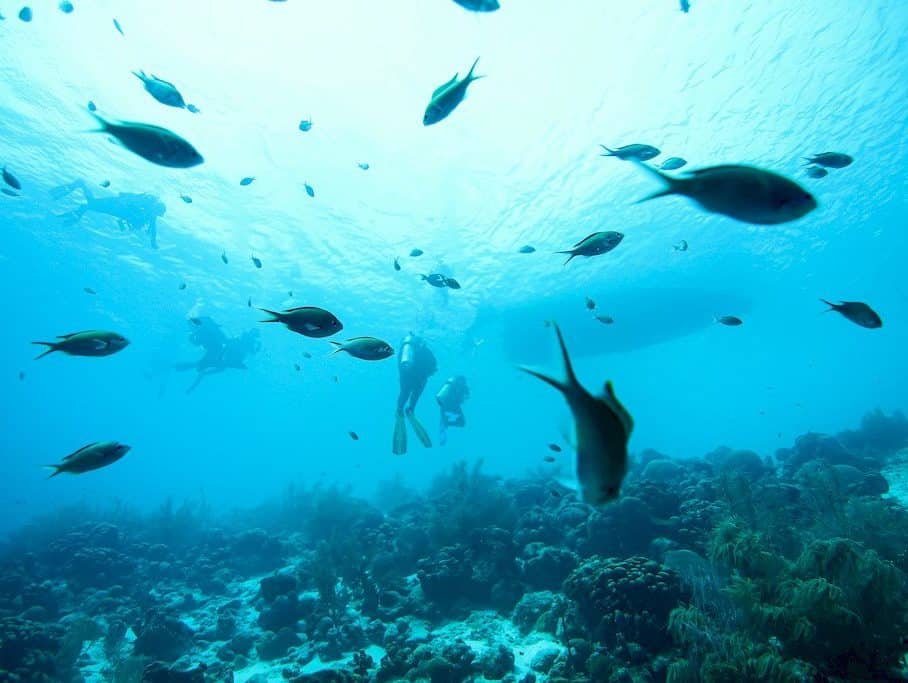Diving with manta rays
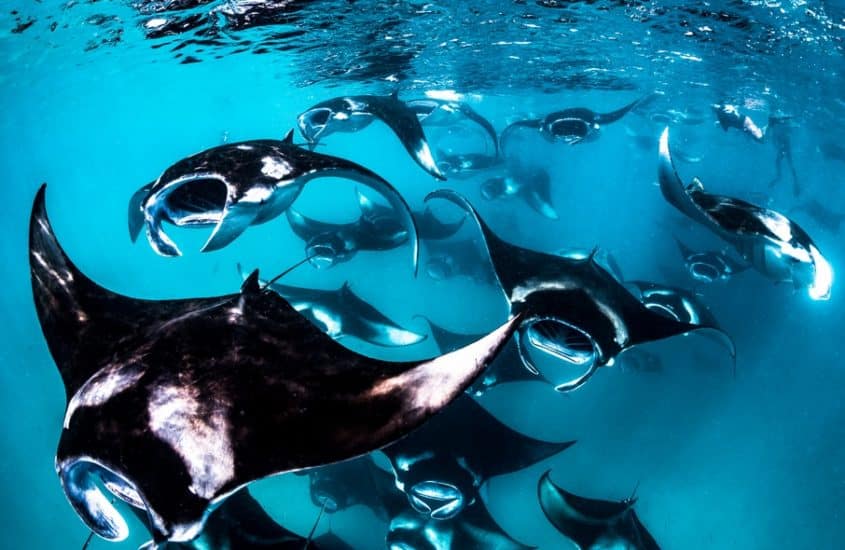
A fascinating experience
I had long dreamed of diving with manta rays. Mythical marine animals sought after by divers, manta rays make us dream and make us inexorably want to go and meet them. Immersion in the fascinating environment of manta rays.
Thanks to my friend Faycal for de wonderful pictures.
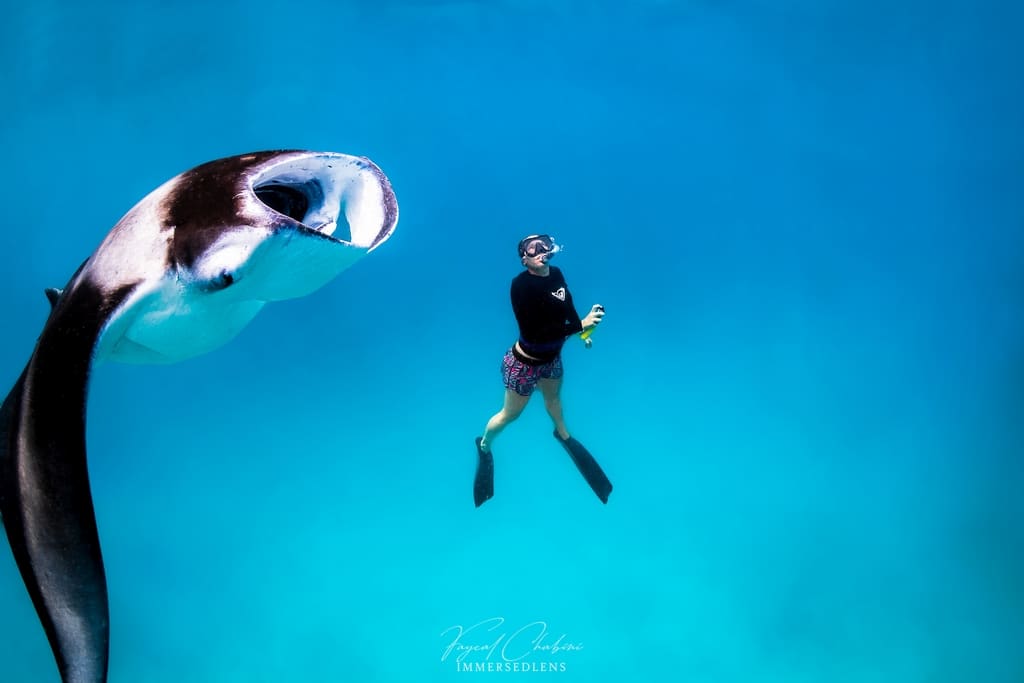
My very first meeting
I had already seen a manta ray from a little far away while diving in the south of Mayotte. The meeting was very brief and not really very close. But it was already great.
Later, although we were not yet in the middle of the season, I had plenty of time to see manta rays several times during this cruise to Raja Ampat.
The first time in the north was awesome. That day, my camera had decided not to work. Well, I would just enjoy the dive, and that’s fine.
We were watching a guitar shark when a shadow flew over us. For a moment, I think the sun has been veiled. And then I look up. The manta ray is huge. It turns above us and leaves. Whaoww. What an impressive animal.
Two of the groups of divers remain on the spot to wait till the manta ray comes back, but our guide tells us to go in another direction. I wonder if that is the right thing to do. And while following him, my eyes are still looking at the other team waiting at the first place.
My guide tells me to go down and stick closer to the bottom. I do this and he makes me understand that we have to wait. Yes, but there is nothing, nothing at all. I just want to be able to dive with the manta rays. And then suddenly, he points his finger behind me.

In mid-flight
And I see it, gigantic. I stand still and this majestic animal passes so close to me, almost brushing against me, that it could have touched me.
I can’t take it anymore. My heart threatens to explode because the emotion is so great. I think I’m crying in my mask. My guide asks me to come near him and we get even closer to the bottom. And the manta ray makes new circles around us.
We could have stayed there, just frozen by the beauty of this show. However, our air reserves force us to ascent. And slowly we leave this incredible space where this dream of diving with manta rays has become reality.
Know the manta rays
The manta ray (called “devil of the seas” in the past) is impressive and fascinating. For those who don’t know it, it might even seem scary. Yet this cartilaginous fish is completely harmless to human beings.
Indeed, if it presents itself as a giant with a flattened body, like a large kite, it does not have spurs and does not sting. In front of it’s body, it has two cephalic fins that serve as a spoon to fold it’s food into it’s huge mouth. However, in reality, the manta ray eats only plankton and microscopic animals.
There is therefore no danger in going to meet it, despite its imposing size.

An animal of weight
Distant cousin of sharks and other rays, it is the largest of the rays. Two types of manta rays exist: the reef manta ray (Alfredi) and the giant or oceanic manta ray (birostris).
The first is the one most often observed by divers. With a wingspan of 3 to 5 meters, this “small model” can weigh up to 1 ton. It is rather sedentary and is observed in tropical seas.
The oceanic manta ray is a giant. With its wingspan of up to 7 meters and two tons, it is impressive. It can travel great distances during its migrations and can be observed in colder seas.
Differentiating manta rays
It is quite simple to differentiate the two species of manta rays. The reef has black spots on its ventral side. On its black back, there are white spots in a Y shape.
But, on the contrary, the oceanic manta ray has no spots on its belly. On his back you will see white spots in a T shape.
Their specific features (spots black or white) are like their identity cards.
Invasive companions
While manta rays like to live in small groups, they are often “colonized” by remoras or suckerfishs. It is to get rid of these remoras that we can see them jump out of the water and fall back hitting the surface.
Did you know?
- The manta ray can live up to 50 years
- It has to swim constantly to survive. So you’ll never see it still.
- The name “Manta” comes from coat in Spanish
- The manta ray is ovoviparous: its eggs hatch inside the body of the female. At birth they weigh about ten kilos (for the reef manta)
- The reef manta ray gives birth to a single cub every two years.
- Sharks are predators of manta rays
- Despite its status as a vulnerable animal since 2011, it is still fished in some countries.
Where can we dive with manta rays?
Manta rays can be seen in many parts of the globe. Indeed, I happened to see them in Mayotte, Raja Ampat and, later, while going to dive in the Galapagos.
The Maldives and Indonesia also remain famous spots for spotting manta rays.
Manta rays are usually found on “cleaning stations”. These are the places where smaller fish clean the mouth, gills or skin of manta rays. There is something for everyone. The little ones have food, the larger ones are clean and rid of parasites when leaving. Cleaning stations are also places to socialize for manta rays.
15 destinations where to observe them
Diving with manta rays is possible all year round everywhere in the tropical and subtropical seas of the globe. But also in the Pacific. Every year, lucky divers can spot them in the waters of the Red Sea. However, there are destinations where the opportunities (see certainties) to meet them are higher. Here are fifteen of them:
- Australia, Lady Elliot Island: all year round (peak during the Australian winter)
- Bali: all year round
- Cocos (Costa Rica): October to May
- Ecuador, Isla de la Plata: June to October (largest population of oceanic Mantas recorded in the world)
- Fiji: April to November
- Hawaii: May to October (night dive with manta rays)
- Komodo: all year round
- Maldives: all year round
- Mexico, Socorro: November to June (peak in May and June)
- Mozambique: all year round
- Palau: October to May
- French Polynesia (Tuamotu): June to October
- Raja Ampat: October to May (peak between December and March)
- Thailand, Similan Islands: late December to early May
- Yap all year round with a peak between December and April
Diving at night with manta rays
Night dives offer very special atmospheres. Indeed, at night, while some species are at rest, some go hunting. Others finally continue their non stop movement. This is the case of manta rays. And for diving enthusiasts, a wonderful opportunity to observe them differently.
By going for a night dive with the manta rays, you give yourself the assurance of an impressive and fascinating show. For this, dive lights will be directed to the water. Attracted by the light, the plankton will come to clump together below the spotlights. Manta rays will only have to approach to eat all that food. And you, in the meanwhile, you will just enjoy this magic moment.
If the show is there, we can reasonably question the relevance of deliberately influencing marine life for our own pleasure. What do you think?
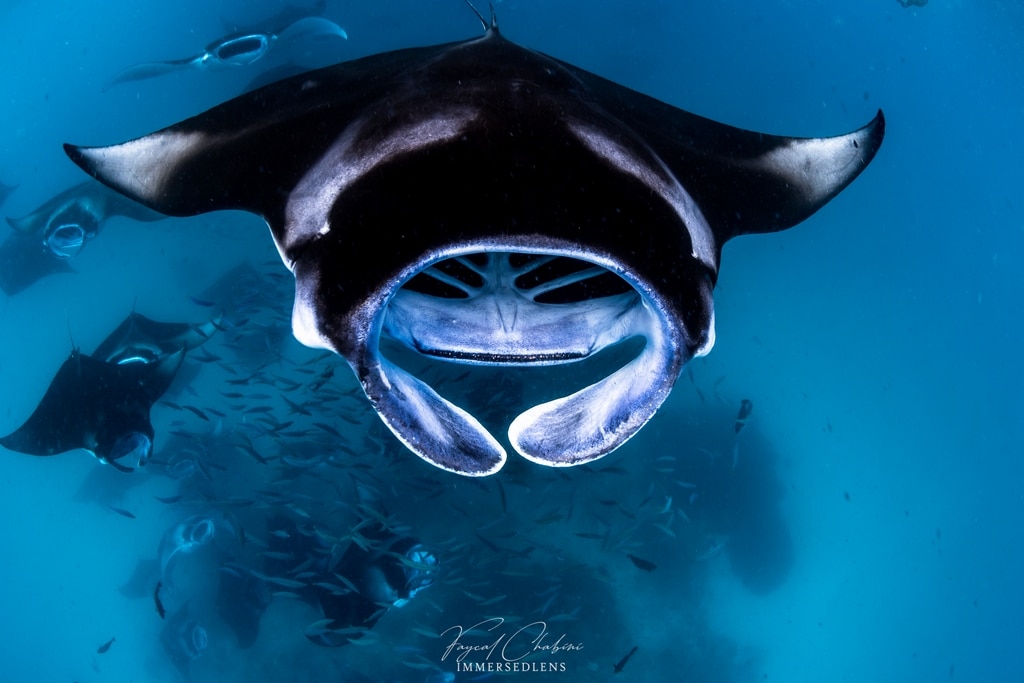
Snorkeling meeting
If for one reason or another you can not dive, or for your companions, it is quite possible to snorkel with manta rays. Indeed, by going to the sites where they eat close to the surface, you will be able to observe them. Be careful, however, to take good care to swim calmly towards them. Similarly you must keep your distance, do not touch them and respect the same good practices as for diving.
Take your mask with you and enjoy the show.
Good practices for diving with manta rays
Diving with manta rays requires respecting some recommendations and good practices.
- Listen carefully to the dive briefing
- Never chase the animal. Even if you want to make your most beautiful shot. In any case, the animal being much faster than you, you would only risk scaring it away. And by this, prevent the entire group from continuing to dive with the manta rays.
- In the same way, make slow movements so as not to frighten him. If you stand still, she will want to come back. The calmer you are, the more she will want to come close to you, because it is curious.
- Keep your distance (3 meters at least) and let the ray come towards you
- Do not block the way of the manta ray. It doesn’t know how to stop or reverse
- Do not touch the manta ray
- On the cleaning stations, stay in the vicinity and position yourself as low as possible, without damaging anything. The manta ray will not be afraid and will be able to make several circles just above you. It is important to leave the top of the cleaning station free.
- Follow your guide, he/she knows precisely how to allow you to see manta rays in the best conditions

Have you ever been able to dive with manta rays?
Tell me about your first experience where you were able to dive with manta rays or your hopes of crossing them in a comment below
And above all… don’t forget to be happy 🤗
Join my Facebook page for more sharing
Helene

